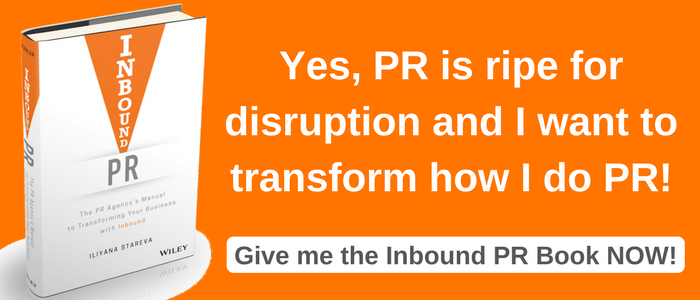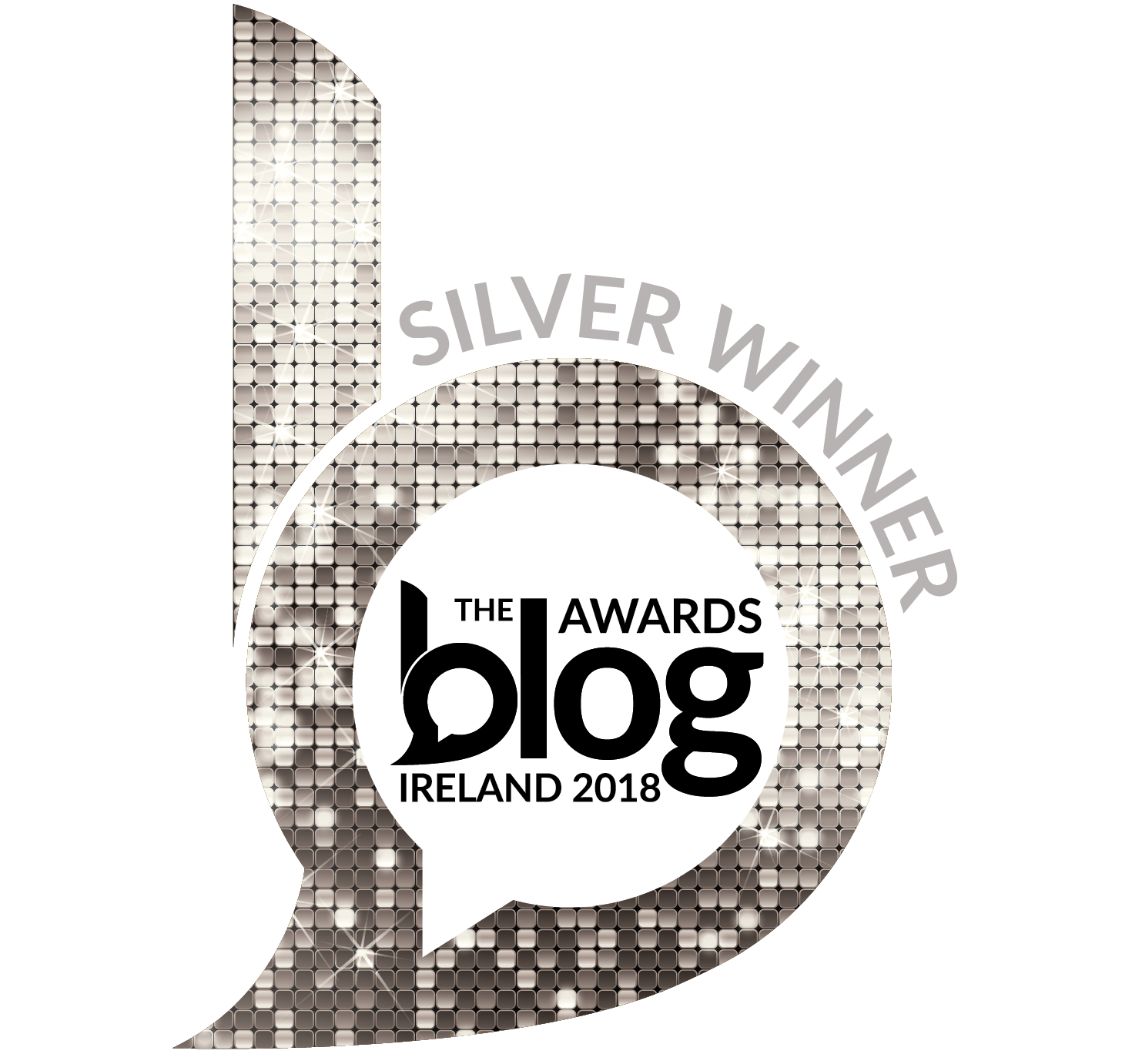Social media for business  sustainability is going mainstream. That's what the latest Social Media Sustainability Index found. But how did that happen? And most importantly why? What is the potential of social media for sustainability communications and how does it add real business value? Read along to find out, I am about to enlighten you, or more precisely, a dear friend of mine is about to do so.
sustainability is going mainstream. That's what the latest Social Media Sustainability Index found. But how did that happen? And most importantly why? What is the potential of social media for sustainability communications and how does it add real business value? Read along to find out, I am about to enlighten you, or more precisely, a dear friend of mine is about to do so.
One year ago I had the pleasure of having a Google+ Hangout with the most enthusiastic person I know – Julie Urlaub.
Julie kindly agreed to participate in an interview with me as part of my research for my second BA dissertation that was also published as a book.
Julie is a true pioneer when it comes to social media for sustainability. She lives and breathes it and she is extremely passionate about her work.
She is Founder and Managing Director of Taiga Company – a sustainability and social media consulting firm specialising in sustainable storytelling. Julie is also the author of The Business Sustainability Handbook.
She not only understands the potential of social media for sustainability, but also successfully advises clients how to make best use of it and encourages people around the world to adopt a greener lifestyle.
Her blog offers tons of useful information, advice and tips and she has a massive, loyal following all over the social web. No wonder she was recognised as Twitter's 10th most influential sustainability voice in America by The Guardian. You should definitely follow her @TaigaCompany.
I'm so grateful to Julie for opening my eyes and being part of my research. I'm glad to have made such a friend and I hope to meet her in person one day.
But let Julie's words speak for themselves. I will let you be inspired by her, just as I am.
Enjoy the interview!
Q: What’s the role of social media for sustainability communications?
Social media can play a number of roles. Firstly, it’s a wonderful opportunity to align external and internal communication. At the beginning social media is about driving eco awareness (i.e. brand awareness of what a company is doing), stakeholder engagement, knowledge sharing, collaborative efforts and advancing and elevating the conversation to a higher level.
Currently, the central role though is storytelling. So, once a company defines what sustainability really means for the company itself and how it is similar to its values, then how do you communicate that internally to the organisation and externally to stakeholders? This is where social media is great because it provides text, video, pictures to show how the organisation is doing sustainability and share these sustainability concepts through storytelling. This, in turn, helps define the brand and what it stands for and also inspires through education and visual display adding a human element.
So, it really is about storytelling with en emotional component that engages people to action. And in that way social media personalises the communication.
Sustainability or CSR is very much a mental conversation. When you translate it through pictures, videos, games etc. on social media it takes on a whole different life; becoming exciting, with a cool factor and so more engaging, bridging that gap between high level mental conversations to “this means something to me.”
Q: How can social media create business sustainability value?
This is where social media and sustainability parallel their journey together in the sense that sustainability offers opportunities for business growth, brand differentiation, unlikely pairings with other stakeholders or other groups, it puts things on the radar from a business perspective. Social media offers similar opportunities in terms of brand awareness and visibility to what others are doing, because if you are listening, if you are brand monitoring or if you are monitoring competitors in sentiment value, you will get visibility to key issues that stakeholders are bringing up. This gives you an opportunity to build the brand and engage with those stakeholders on specific topics. So, in terms of value you cannot underestimate the value of collaboration, engaging with stakeholders and incorporating that feedback into the business. This is a real key shared value that offers win-win solutions and opportunities on every level.
Furthermore, social media technologies can help organisations bring down silos and facilitate knowledge sharing, which increases efficiencies, collaboration, team work and morality, because by sharing you are moving towards a common goal.
This also leads to how knowledge management around shared value or creating value with social media and sustainability is about visibility to a transparent, authentic conversation that engages others in the sense that it gives them the freedom to take action, it gives them the freedom to fail, it gives them the opportunity to show how they addressed challenges and collectively rethink this to get a different result.
Therefore, the most powerful piece of shared value is that we collectively can praise each other for the work that we've done, but more importantly we can collectively work together to address these issues and move forward, because when we are looking for solutions together we have better chances of succeeding than when only one is doing so.
We are nevertheless still discovering this value created by sustainability and social media; it is still birthing.
Q: How can social media be a support tool in terms of driving change (social, cultural, consumption)?
The first important point here is social media’s educational, informative and how-to role in terms of sharing information and facts about what a company is doing and the respective results or how to use its products and what benefits it offers for a greener lifestyle.
The second part is about how the company actually implemented its sustainability strategies.
Another thing is gamification to make it fun, cool, meaningful and relevant to a person, or a family, or a community and so engaging for creating powerful change. This is how social media is currently persuading, whether it be cultural or about sustainability. Going forward social media’s role will evolve.
Q: How can social media be a menace in terms of using the manipulative power of social media to influence consumers and other stakeholders?
This question addresses two levels – the strategy level and the tactical level.
Strategy – traditionally communications was about push and persuading. The marketing avenue was not delivering facts; it was about products and creating an image and emotional ties, it was top-down persuasion with no avenue to talk back. But the menace around this traditional approach is that in social media it doesn't work. Social media is more facts-based, more informative; it’s about the conversation and the dialogue about the whys and the hows. Don’t persuade, be factual, be honest, be authentic and own it. Even in a backlash companies should be authentic and honest, instead of hiding behind the true agenda.
When it comes to the tactical level it could be about pushing too much communication, but not the accurate information, or not engaging the right stakeholders with the right topics of interest or not using the correct platforms. It has a menace in the sense that if someone goes on YouTube, he or she doesn't want to see a text document; if someone is interested in learning about sustainability through video then companies should communicate in the form that the interested people are using.
The second thing here would be not listening – people are talking, so not listening to what is said about your brand or topic is like going to a dinner party, sharing a thought and no one responding to you. This would make you feel angry and disrespected and not wanting to talk to these people at all because they don't want to listen to you. So why would that be any different from a brand to a consumer on social media?
The acknowledgement that brands are actually hearing someone’s thoughts and contributions, closing that loop and taking that information into consideration about how they can forward their sustainability efforts or at least providing some feedback back such as “We heard you, we know what you mean, unfortunately we are not in the place right now, but we are working on it” matters.
Closing the conversation loop is a huge menace. Companies have to focus on acknowledgement and following back on feedback because acknowledgment can be a powerful tool. Social media is after all about the human element. People do not want to be talked at.
Q: What are the main challenges and the opportunities for businesses using social media for sustainability communications?
The first challenge is the standalone component – within an organisation social media and sustainability are separated from each other; for example, social media is separated from marketing and/or sustainability communications.
The second part is C-level engagement and adoption. If executives are not embracing sustainability, it's really not going to work in the overall business strategy or contribute to the business as a whole.
The same thing applies to social media.
There is, however, a huge opportunity for C-level executives to use social media for sustainability communications internally and externally. People love to know why companies decided to do a specific thing, how is it working, what does it mean to the organisation, how does it lead employees around sustainability, how does the supply chain work around sustainability – these are questions that would be eaten up on social media from consumers and different stakeholders because that's exciting news, that's information that people want to know; it's like the behind the scenes of how everything is working, which is very different than traditional marketing communications. As a result, it's very engaging and a great way to build brand differentiation.
Obviously, there are a number of challenges here too such as what and how to communicate exactly, greenwashing concerns, how to deal with negative feedback etc.
The overall challenge is businesses not being clear about the strategy. They may have a marketing strategy, but if sustainability is not embedded within the business, then it's not clear what the objectives, hopes and metrics are. So, if you don’t know what you want to achieve, how are you supposed to communicate it and do so authentically, if it's not embedded?
Another challenge is how and what content exactly to create and when and how frequently to share it in order to engage with stakeholders about their specific interests.
Furthermore, CEOs are unaware of their role as a leader. They are aware of their role as a leader within the business, but social media offers an opportunity to lead in a different space, so it’s an unknown territory and CEOs are not clear about what that role might be.
Q: What social tools and channels are companies dedicating to communicating sustainability and how often based on your experience with clients?
Resources and scalability really dictate where a company can play. So Facebook, Twitter, LinkedIn etc. are scalable in terms of resources for all players – small or big. But in terms of gamification, or microsites, or corporate blogging etc. these are rather resource-driven. Corporate blogging is a personal favourite because it allows employees from all levels to show how they articulate with sustainability from their personal view and professional activities.
Social media offers the ability for everyone in their own way to engage and contribute, but also at the same time differentiate themselves from everybody else.
Q: What are the benefits of these activities for the overall business?
In a nutshell: improved brand reputation, more customers, enhanced crisis management, collaborative opportunities, co-creative opportunities.
Very important topic here is stakeholder intelligence that includes data collection, crowdsourcing, reputation management, PR.
Then another one is building local community and involvement in terms of intelligence, opportunities, impact and basically building local trust. The other component would be making employees more productive because social media can help make ideas visible and accessible by having conversations and building communities across different channels within a company and most importantly across different departments, i.e. PR, marketing, sales all together talking about sustainability within the organisation from different angles so that they communicate their different perspectives.
And my favourite benefit is knowledge sharing, so sharing of ideas, facilitating information exchange to power collaboration on ideas and product development, i.e. improving products on issues such as water management, energy etc.
Q: How can companies best avoid potential pitfalls (with regards to question four) when using social media for sustainability communications?
Having a strategy, having the metrics and KPIs embedded is, of course, a first step. But identifying who your stakeholders really are, where they are online, how to reach them with the different platforms that are available and which platform is best for what purpose (i.e. to talk about recycling, or about water etc.) and using that information wisely is also key.
The second part would be updating the platforms regularly with relevant content in a way that is meaningful (not just to throw issues around) and having a call-to-action. It's also important to know what you want to achieve as a result of sharing that information: for example, should customers subscribe to the website, or go back to the newly published sustainability report. The tricky part is how you track whether the online sustainability communications inspired eco action.
Another thing is being creative about how a company is embracing sustainability and how exactly is it talking about it. It doesn't have to be the most cleverly designed video, but having a truly inspiring story about how the company achieved a specific goal (e.g. reducing carbon waste) and communicating it in an innovative and fearful way is crucial.
So don’t be fearful, don’t rush in before you know what you are doing, don’t hide, don’t lie, don’t be inauthentic, be mindful of how you are choosing to advance the conversation to tell an authentic, never-ending story, admitting that there are challenges but that you are committed to pursue sustainability in the long-run. Nobody has a straight success, there are ups and downs in achieving a goal, but mindfulness is an absolute do and a don’t is to say in the traditional marketing way “we had a goal, we did it, it’s done.”
The dos and don’ts are, however, very specific to a company – they evolve with time too.
Q: What is your best practice advice for using social media for sustainability communications to create business value? If you could mention only one thing what would that be?
The single best advice would be to get everyone in the organisation involved in sustainability and social media.
The reason being is that every person and every employee is going to have a different view on what sustainability means to them in a job role, in how the organisation implements, succeeds or fails at it and in communicating that to engage more people at different levels of the sustainability path in ways that are very different than only executives or only the PR department speaking about it on social media because everyone is talking about it from their own perspective. So, this adds value and contributes to the conversation very powerfully. It gives other people insight as to how to engage, how to do it, why it means something, it creates that personal meaningful expression.
Other best practices would be: create a strategy, know who your stakeholders are, engage, get your executives and employees involved, combine social media and sustainability within the organisation and not as a standalone practice, educate and train employees by making it fun (but have a policy).
Q: What future role will social media play in creating business sustainability value?
Corporations will use the social platforms more publicly to get true product collaboration, innovation and ideas. It will be more than just engaging with stakeholders, as it mainly is now. It will be more robust and more collaborative in nature in terms of engaging in such a dialogue that allows incorporating feedback and taking the company’s activities to the next step.
The next emergence of engagement will then be co-creating and co-driving a business.
Thanks to social media ordinary people now have a voice and they are actively sharing their opinions and they will have a role in shaping business.
Executives speaking more about social media as they currently do can be the intermediate towards that big collaborative and co-creative experience. So, the mid-step is leadership taking a more leading role on social media, engaging employees and stakeholders that way to offer a behind the scenes and insights, which is different than what is available right now.
Want to know more about social media for sustainability?
Get the book here. The research was published as a book called “Social Media – Key for Sustainability Communications”. Read it now!







